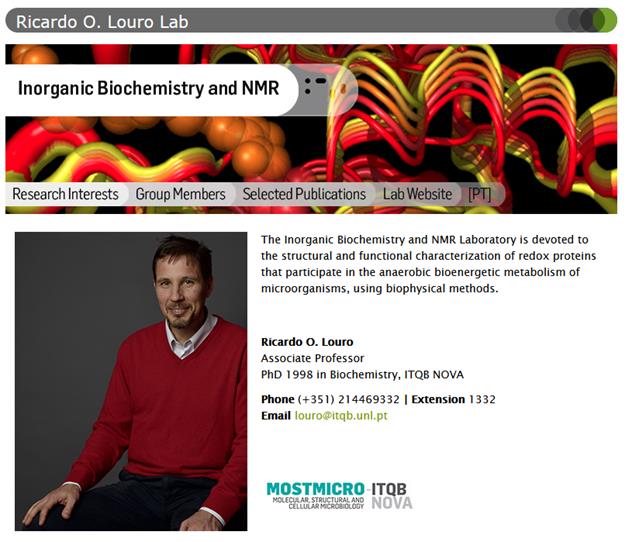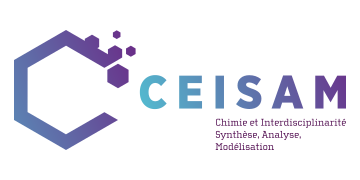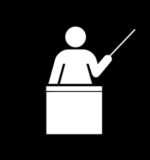In the context of a collaborative visit of Dr. Ricardo O. Louro and Dr. Catarina M. Paquete from the Instituto de Tecnologia Química e Biológica António Xavier (ITQB NOVA) da Universidade Nova de Lisboa (Portugal), I share you the announce of a conference given by Ricardo (head of the Inorganic Biochemistry and NMR Laboratory in ITQB) the 23rd of May at 2 pm in Marie Curie room.
Structural and functional characterization of multiheme cytochromes c: how did they evolve, how do they work, how do we know?

Ricardo O. Louro
Instituto de Tecnologia Química e Biológica António Xavier da Universidade Nova de Lisboa
Av da República (EAN), 2780-157 Oeiras, Portugal
Multiheme cytochromes are recognized key players in numerous anaerobic metabolic processes, some of which can be traced to very ancient activities in the biogeochemical cycles of iron, sulfur and nitrogen. Some of these metabolic capabilities are nowadays being co-opted for the development of microbial electrochemical technologies that rely on the role of multiheme cytochromes for connecting the microbial metabolism to solid conducting surfaces.
The structure of cytochromes with up to 16 hemes per polypeptide chain has been reported and cytochromes with up-to 10 hemes appear to be very common. However, the detailed functional characterization of such complex proteins is compounded by the fact that most spectroscopic techniques do not provide sufficient discrimination of the individual hemes.
In this seminar I will describe how we go about discriminating the role of each individual heme in the thermodynamic and kinetic electron transfer properties of these multicenter proteins using combinations of NMR spectroscopy, stopped-flow kinetics and (spectro)electrochemistry. I will also describe how these properties have been manipulated to modulate the rates of electron uptake and release of electrons, and how these properties imprint control of catalysis performed by cytochromes that perform ‘chemistry’ in addition to electron transfer. Finally, I will present our current proposal on how some of these proteins came to be what they are presently form ancestors with different kinds of hemes.
Contact : Estelle LEBEGUE

